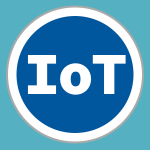 We’ve all heard of the Internet of Things, or IoT.
We’ve all heard of the Internet of Things, or IoT.
What we aren’t yet quite sure of, however, is what actually qualifies as an Internet Thing.
Granted, it will have some kind of computer chip inside it, and you can hook it up to a computer network rather than just running it isolation.
For example, you get home thermostats that are considered IoT things, and baby monitors, and smart TVs, and webcams.
To that you can add light bulbs, doorbells and even kettles (no, we don’t know why, either)…
…as well as cars, trucks and heck, by some accounts, perhaps even power stations.
So there doesn’t seem to be any limit on the size, or price, or form, or function, of a “thing.”
One starting point for a definition is that if you couldn’t connect it to the internet two or three years ago, but you can now (and without using an intermediary device such as a laptop to shuttle data back and forth in bursts), it qualifies.
And that, in turn, raises the question, “Just how much attention was given to security on the average Thing, if they’re bursting onto the market so quickly?”
Clearly, both at work and at home, the IoT can be a blessing: it’s much easier to rig up surveillance cameras in your server room or your house if you don’t need a dedicated server and a network cable to drive each one.
But the IoT can be a curse, too, if the webcam you choose can be breached by crooks and used by them to watch out for you, not the other way around.
So, what’s next for the Internet of Things?
Chester Wisniewski, a Sophos Senior Technologist, has the answers – along with some useful tips for how to dip your toe in the IoT water without getting burned.
Listen to the last episode of last week’s Security SOS webinar series for a fascinating discussion on where the IoT is heading.
LISTEN NOW: What’s next for the Internet of Things ►
